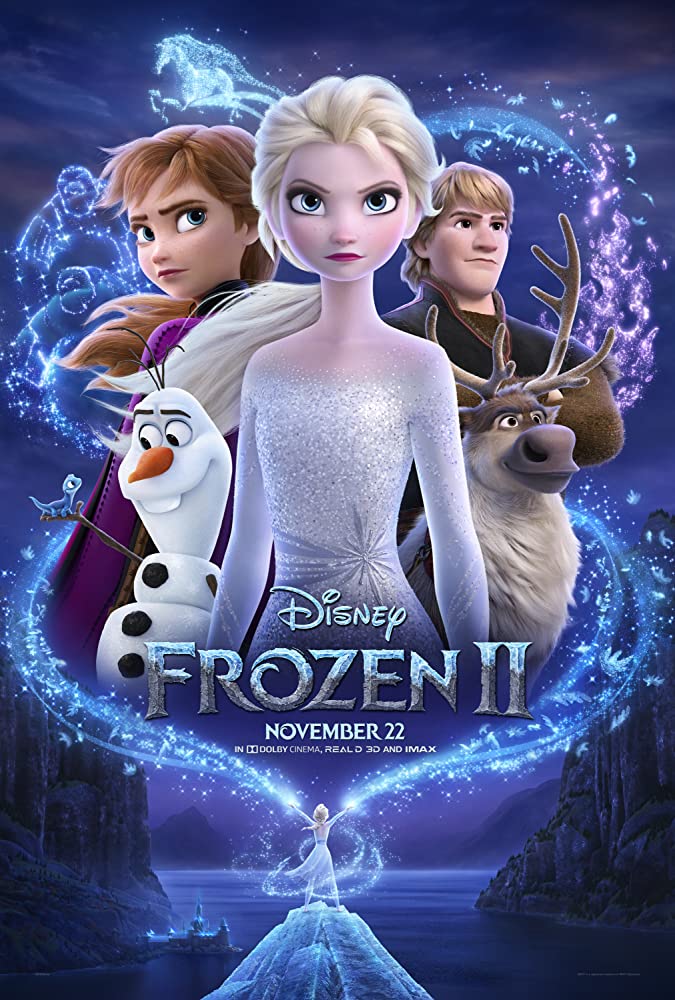I get it. You’ve heard “Let it Go” so many times that it’s starting to make your ears bleed, and if you hear it one more time, you’ll go insane. But that’s beside the point. Regardless of whether the Frozen craze has driven you to a point where you’re not necessarily the franchise’s biggest fan, you can’t deny that it’s a damn good film.

Of course, when Frozen II was announced, I was ecstatic. I was ready to see how each character’s story would move on and to see who everyone was past the original and its corresponding short films. Not only this, but a six-year time difference is quite a lot. I was only thirteen years old hen the original film came out and was eager to come back with a new sense of self and experience under my belt. I’ll admit, I had my reservations. Disney princess sequels tend to be a little tragic (see “Pocahontas II: Journey to a New World”), and I didn’t want characters I loved so deeply to fall victim to the supposed Disney sequel curse.
I can pridefully say that this was not the case for Frozen II. In fact, I’d go as far as to say that Frozen II is even better than the original. I’ve seen the film about four times in theatres now, and even that wasn’t enough. Frozen II isn’t as simplistic as a cash-grab made to profit off kids who loved the first, it’s so much more than that. Frozen II is for an audience who’s six years older, and perfectly conveys the notion that you’re more powerful and capable than you think —if only you show yourself, and acknowledge that you are the one you’ve been waiting for all of your life.
Warning: Spoilers Ahead
Frozen II is unique in that it breaks every single rule. There is no conventional villain, and the storyline simply takes no prisoners. They lead the audience to believe two beloved characters (Elsa and Olaf) are dead and tackle complex feelings of grief, anxiety and emotional trauma through Anna’s solo song, “The Next Right Thing.” The film tears apart toxic masculinity through Kristoff’s character development with a Chicago-esque 80s rock love ballad, “Lost in the Woods,” and the statement he utters to Anna after she apologizes for abandoning him to follow Elsa, “It’s okay. My love is not fragile.” If that’s not enough, the film continues its predecessor’s work in completely obliterating the notion that a man has to be the one to save the day. At the climax of the film, when Anna has to awaken the Earth Giants to break down the dam and destroy her kingdom to save its future, she’s running on her last leg. She’s about to be crushed when Kristoff and Sven roll in, picking her up at the last second. From here, Disney could have made Kristoff the film’s saviour, saying “Step aside, I’m going to handle this!” —but they don’t. Instead, Kristoff says: “I’m here. What do you need?” and he lets Anna take the reins in doing what needs to be done. He never tries to overshadow Anna, and allows their dynamic to convey a powerful lesson in feminism and vulnerability in men. Frozen II breaks every single classic Disney princess stereotype —and it’s sheerly phenomenal.

I could go on forever, but I’ll leave you with this: Frozen II is the best film Disney has ever created! It’s something I never thought I’d say, but it deserves every bit of praise it’s received. From one of the best Disney soundtracks (seriously, even the outtakes are extraordinary), its humor and the way they use Olaf to poke fun at the characters’ maturity (and yet, change mocks us with her beauty!), to a storyline that’ll teach lessons to all age groups on the importance of family, self-empowerment and of fully feeling every single emotion. Frozen II is seriously Disney’s best work — and you’ll have to see it to believe me.


